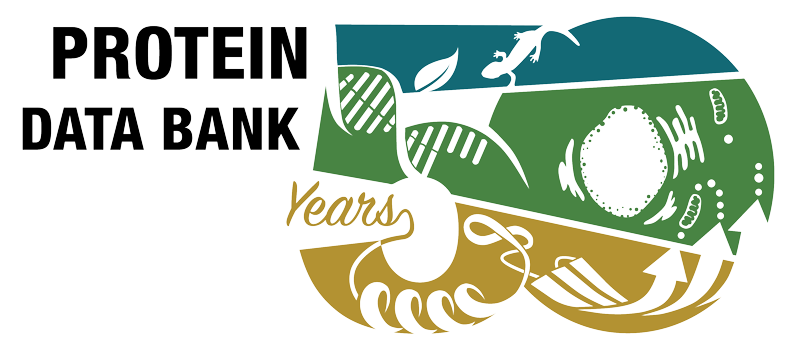Reviews citing this publication (36)
- Targeting the Raf-MEK-ERK mitogen-activated protein kinase cascade for the treatment of cancer. Roberts PJ, Der CJ. Oncogene 26 3291-3310 (2007)
- Regulating the regulator: post-translational modification of RAS. Ahearn IM, Haigis K, Bar-Sagi D, Philips MR. Nat Rev Mol Cell Biol 13 39-51 (2011)
- Post-translational modifications and regulation of the RAS superfamily of GTPases as anticancer targets. Konstantinopoulos PA, Karamouzis MV, Papavassiliou AG. Nat Rev Drug Discov 6 541-555 (2007)
- Protein prenylation: unique fats make their mark on biology. Wang M, Casey PJ. Nat Rev Mol Cell Biol 17 110-122 (2016)
- Post-prenylation-processing enzymes as new targets in oncogenesis. Winter-Vann AM, Casey PJ. Nat Rev Cancer 5 405-412 (2005)
- Lipid posttranslational modifications. Farnesyl transferase inhibitors. Basso AD, Kirschmeier P, Bishop WR. J Lipid Res 47 15-31 (2006)
- Thematic review series: lipid posttranslational modifications. Structural biology of protein farnesyltransferase and geranylgeranyltransferase type I. Lane KT, Beese LS. J Lipid Res 47 681-699 (2006)
- Therapeutic intervention based on protein prenylation and associated modifications. Gelb MH, Brunsveld L, Hrycyna CA, Michaelis S, Tamanoi F, Van Voorhis WC, Waldmann H. Nat Chem Biol 2 518-528 (2006)
- Protein farnesylation: implications for normal physiology, malignant transformation, and cancer therapy. Sebti SM. Cancer Cell 7 297-300 (2005)
- Thematic review series: lipid posttranslational modifications. Fighting parasitic disease by blocking protein farnesylation. Eastman RT, Buckner FS, Yokoyama K, Gelb MH, Van Voorhis WC. J Lipid Res 47 233-240 (2006)
- Ral small GTPase signaling and oncogenesis: More than just 15minutes of fame. Gentry LR, Martin TD, Reiner DJ, Der CJ. Biochim Biophys Acta 1843 2976-2988 (2014)
- HGPS and related premature aging disorders: from genomic identification to the first therapeutic approaches. Pereira S, Bourgeois P, Navarro C, Esteves-Vieira V, Cau P, De Sandre-Giovannoli A, Lévy N. Mech Ageing Dev 129 449-459 (2008)
- Geranylgeranyl diphosphate synthase: an emerging therapeutic target. Wiemer AJ, Wiemer DF, Hohl RJ. Clin Pharmacol Ther 90 804-812 (2011)
- Isoprenoids and protein prenylation: implications in the pathogenesis and therapeutic intervention of Alzheimer's disease. Jeong A, Suazo KF, Wood WG, Distefano MD, Li L. Crit Rev Biochem Mol Biol 53 279-310 (2018)
- Geranylgeranyltransferase I as a target for anti-cancer drugs. Philips MR, Cox AD. J Clin Invest 117 1223-1225 (2007)
- Rho GTPase signaling in the development of colorectal cancer. Leve F, Morgado-Díaz JA. J Cell Biochem 113 2549-2559 (2012)
- Zoledronic acid: an unending tale for an antiresorptive agent. Caraglia M, Marra M, Naviglio S, Botti G, Addeo R, Abbruzzese A. Expert Opin Pharmacother 11 141-154 (2010)
- Mechanisms of disease: Preclinical reports of antineoplastic synergistic action of bisphosphonates. Santini D, Caraglia M, Vincenzi B, Holen I, Scarpa S, Budillon A, Tonini G. Nat Clin Pract Oncol 3 325-338 (2006)
- Membrane nanodomains in plants: capturing form, function, and movement. Tapken W, Murphy AS. J Exp Bot 66 1573-1586 (2015)
- Understanding and exploiting protein prenyltransferases. Nguyen UT, Goody RS, Alexandrov K. Chembiochem 11 1194-1201 (2010)
- Isoprenoids and related pharmacological interventions: potential application in Alzheimer's disease. Li L, Zhang W, Cheng S, Cao D, Parent M. Mol Neurobiol 46 64-77 (2012)
- Modulation of host metabolism as a target of new antivirals. Ikeda M, Kato N. Adv Drug Deliv Rev 59 1277-1289 (2007)
- Recent advances in protein prenyltransferases: substrate identification, regulation, and disease interventions. Zverina EA, Lamphear CL, Wright EN, Fierke CA. Curr Opin Chem Biol 16 544-552 (2012)
- Molecular targets for emerging anti-tumor therapies for neurofibromatosis type 1. Dilworth JT, Kraniak JM, Wojtkowiak JW, Gibbs RA, Borch RF, Tainsky MA, Reiners JJ, Mattingly RR. Biochem Pharmacol 72 1485-1492 (2006)
- Post-translational modification of RAS proteins. Campbell SL, Philips MR. Curr Opin Struct Biol 71 180-192 (2021)
- Lipid-modified proteins as biomarkers for cardiovascular disease: a review. Ferri N, Paoletti R, Corsini A. Biomarkers 10 219-237 (2005)
- Molecular mechanisms linking geranylgeranyl diphosphate synthase to cell survival and proliferation. Agabiti SS, Liang Y, Wiemer AJ. Mol Membr Biol 33 1-11 (2016)
- Emerging Roles of Small GTPases in Islet β-Cell Function. Veluthakal R, Thurmond DC. Cells 10 1503 (2021)
- Post-translational modification of KRAS: potential targets for cancer therapy. Wang WH, Yuan T, Qian MJ, Yan FJ, Yang L, He QJ, Yang B, Lu JJ, Zhu H. Acta Pharmacol Sin 42 1201-1211 (2021)
- Synthetic isoprenoid analogues for the study of prenylated proteins: Fluorescent imaging and proteomic applications. Wang YC, Distefano MD. Bioorg Chem 64 59-65 (2016)
- The Role of Geranylgeranyltransferase I-Mediated Protein Prenylation in the Brain. Gao S, Yu R, Zhou X. Mol Neurobiol 53 6925-6937 (2016)
- Temperature-Responsive Nano-Biomaterials from Genetically Encoded Farnesylated Disordered Proteins. Hossain MS, Zhang Z, Ashok S, Jenks AR, Lynch CJ, Hougland JL, Mozhdehi D. ACS Appl Bio Mater 5 1846-1856 (2022)
- Geranylgeranyl diphosphate synthase: Role in human health, disease and potential therapeutic target. Muehlebach ME, Holstein SA. Clin Transl Med 13 e1167 (2023)
- Medical Advances in Hepatitis D Therapy: Molecular Targets. Vogt A, Wohlfart S, Urban S, Mier W. Int J Mol Sci 23 10817 (2022)
- Molecular basis and current insights of atypical Rho small GTPase in cancer. Huang H, Wang S, Guan Y, Ren J, Liu X. Mol Biol Rep 51 141 (2024)
- Structural Insight into Geranylgeranyl Diphosphate Synthase (GGDPS) for Cancer Therapy. Pham AC, Holstein SA, Borgstahl GEO. Mol Cancer Ther 23 14-23 (2024)



 PMID:
PMID: 